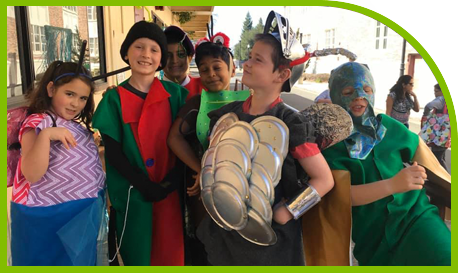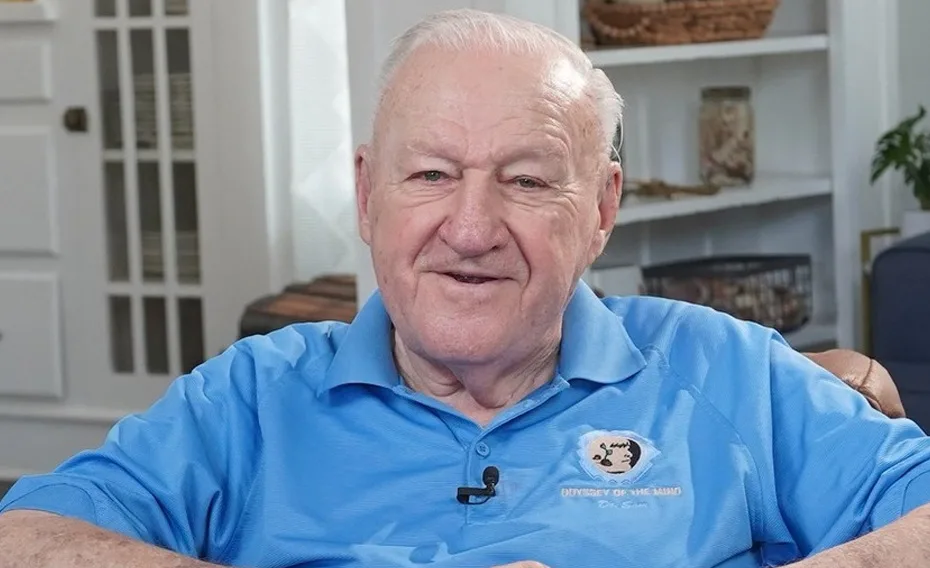A Word on Problem 3 – Transcript
Key Moments
1:04: Classics Problem and Research
2:16: Required Elements
3:30: Odyssey Speak Original, Artistic Quality, Effectiveness
5:20: Glossary Definitions
9:13: Clarifications
Video Transcript
Hi, I’m Leslie Satin and I am the Problem Captain for Northern California of the Classics Problem. And I have been such for many years. And I’m going to tell you a little bit about it now.
National has decreed that we are not able to use the Problem, this year’s current Problem to discuss and delve into and discuss the different ramifications because they say that it could be considered Outside Assistance. Even though we try our best not to provide Outside Assistance, as we read through the Problem. And, different people listening, different coaches, listening might interpret what is being said in completely different ways, some of which are wrong. So, anyway, we are not allowed to talk about the current year’s problem. Instead, I will be telling you a little bit about the Classics Problem in general.
1:04: Classics Problem and Research
So, the hallmark of the Classics Problem is that the team will have to do some research. Oh my, they might learn something.
So, in past years, they had to research different literary submissions, art and their artist’s mythology, famous mysteries from the past and even different styles of theater. For example, Vaudeville. Golly, what kid today knows what Vaudeville is? So, the kids have fun. They are able to research these different things, and then they are informed
In terms of solving the Problem, you need to pay particular attention to the Spirit of the Problem on the first page. The team must include these elements in their solution, even if these elements are not scored. Usually, they’re scored, but sometimes they are not. So you tell your team to include those elements in their solution, otherwise they can get a Spirit of the Problem Penalty. And we don’t want that.
2:16: Required Elements
Also, pay good attention to the required elements. Those are found in Section B under Limitations. It tells you exactly what needs to be in the Problem in the solution: required characters, required actions, required activities — are any artistic representations required? So pay good attention and make sure they’re included in your solution.
Also watch out for key vocabulary words, for instance, “must versus may,” “can versus cannot,” “does versus does not.” And then, “or,” that’s the choice. You can do it, or you don’t have to do it or include it. All those words mean exactly what you think they mean but pay attention to them and make sure you follow those directives.
3:30: Odyssey Speak: Original, Artistic Quality, Effectiveness
Now, we also have something that I call Odyssey Speak. And those are words that have slightly different meanings in Odyssey of the Mind. I call them Odyssey Speak with apologies to George Orwell and his novel 1984.
For instance, “original.” Original means that it’s completely made up by the team and it has never existed before. So, if it calls for an original character, it cannot be somebody from the past, uh, a real-life person or a real dead person from the past. It has to be right out of the team’s brainstorming sessions.
Also an original story is what your team is going to write as part of their solution or an original creation has to be completely made up.
Another phrase that is used quite often in the problems is “artistic quality.” And although it is defined in a glossary, an easy thing to remember is, how cool or pretty it is. So, you can think of it that way.
And effectiveness; things are judged for their effectiveness. How it advances the story. Does it do a good job? Is it creative, et cetera?
Now there are, within the body of the Problem, there are several words and phrases that are italicized, and anything that is italicized means that it is defined in a glossary.
5:20: Glossary Definitions
Well, there are two glossaries. One is in the Program Guide, and that is chapter 6. It defines for example, “character,” what is a character? Well, a character does not need to be portrayed by a team member, but it must have human characteristics. For instance, a talking banana — clearly that is original, and the talking part makes him humanish.
Also often “portrayed in any way” is a frequent phrase that’s used. And that means it can, something can be, it can be a team member, it can be a puppet. It can be anything that the team can imagine.
You also need to know the difference between a “prop” and a “set.” That’s defined in the Program Guide as were the other previous two. For example, if you have a telephone sitting on a table and a chair next to the table, and the phone rings and one of the characters answers the phone, has a little chat, and sits in the chair at the same time. Well, then the chair and the telephone are props because they are both being used. What if he just picks up the phone chats for a few minutes and does not sit in the chair? Then the chair is merely a set piece and is not considered a prop at all.
I am not one hundred percent sure about the table. Is it being used? Not really. It is a support for the telephone, but I don’t think that it is considered a prop.
Okay. The other place you will find words defined — words in your Problem defined — is in the Problem glossary. And it’s in the very last page of the Problem. And it’s very important to understand what interpretation is intended.
For instance, last year, our Problem was required — let’s see the set pieces — I can’t actually remember too well, but anyway, everything had to fit in a container of defined size. So, what is a container? Is it a box with stiff sides? Is it a duffle with expandable sides? Just what is a container? How do you define container? Well, guess what, in the Problem glossary, it told us it had to be, have stiff sides, like a box, not a duffle, which is expandable, which will hold a lot more stuff.
So, stuff like that is, is defined stuff — words or phrases that pertain specifically to your, this year’s Problem.
Sometimes the problem will ask for artistic recreations, and they are to be judged for their resemblance to the original. Well, guess what, make it look like the original, no artistic license. Make it look like the original, you’ll get more points.
And also, often you do not have to recreate the whole painting or structure or something. For instance, you might just have a painting of a smile. Oh, I know that smile. That’s the Mona Lisa, for sure. So you have to recreate enough of it that is recognizable to the judges and the audience.
9:13: Clarifications
Now the next thing I want to talk about is clarifications. Do not hesitate to write for a clarification if you are not sure that you’re interpreting the problem correctly, or if you are not sure that an aspect of your solution is allowed.
For instance, can my structure be made of marshmallows? You guys might think it’s fabulous, but maybe it can, maybe it can’t. Write for clarification, and you’ll get an answer. But make sure when you write your clarification, make sure you give enough information for the clarifier to know what the heck you’re talking about and what you’re referring to and what aspect of the problem you are referring to. An important deadline for clarifications is February 15th, and no clarifications will be accepted after that date.
So, I think I’ve covered most of the bases for the Classics Problem. I hope that you all have a fabulous experience this year and get creative. Thank you.




